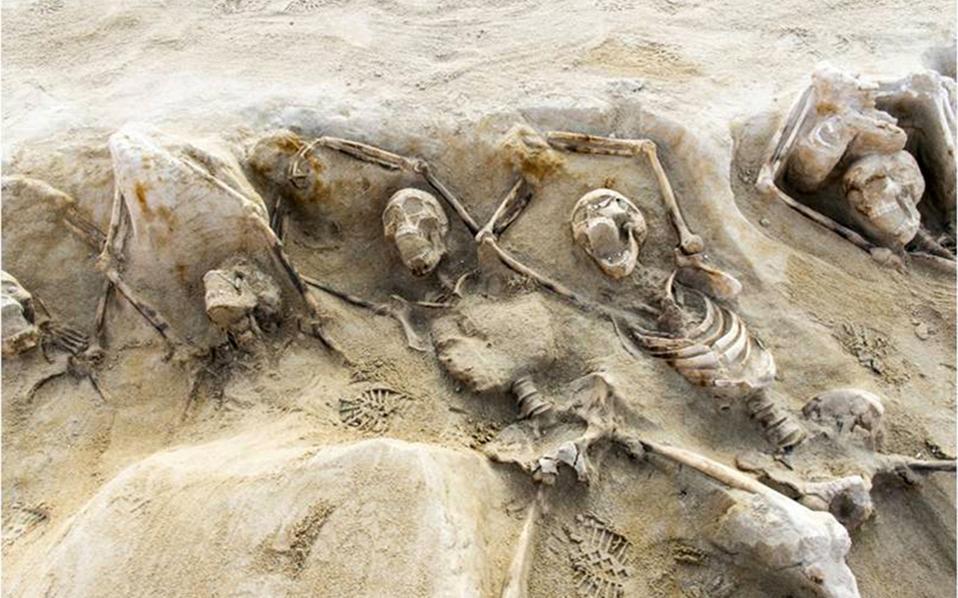Plans are under way for the construction of a new museum in the Faliron Delta region, southwest of the Athens city center, to house what is considered to be one of Attica’s most significant necropolises of the Archaic period (late 8th to early 5th c BC).
Parts of this ancient burial place were excavated by the Greek Archaeological Service in the early 1900s, but the largest and most significant site was unearthed during the construction of the Stavros Niarchos Foundation Cultural Center – designed by Italian architect Renzo Piano, the center was arguably the most important cultural opening in Greece last year.
During their excavations, the team of archaeologists of the 26th Ephorate of Prehistoric and Classical Antiquities (EPCA) came across a huge variation of burial practices: from simple pit graves to pot burials of infants and young children to animal graves.
The most impressive discovery, however, occurred in March 2016 when 80 male skeletons were found placed side-by-side in a 2.5-meter deep grave.
The skeletons, most of which had metal handcuffs attached them, came to be known as the “captives of Faliron” and even made it into Archaeology, the publication of the Archaeological Institute of America, as one of the “top 10 discoveries of 2016.”
If everything goes to plan, the “captives of Faliron” and the other grave finds will soon find a permanent home in the museum – also to be designed by Renzo Piano so that it harmonizes with the SNFCC.
Putting a cemetery on display may sound ghoulish to some, but a lot can be learned from the dead and the funeral practices of ancient times, according to Dr Stella Chrysoulaki, director of the 26th EPCA.
She stresses, however, that the design of the new museum must recreate the conditions necessary that will ensure the funerary offerings are not separated from the dead for whom they were intended, “for they reflect the values and perceptions of the living and can therefore act as a guide for an interpretive approach to the Faliron society of yore.”












